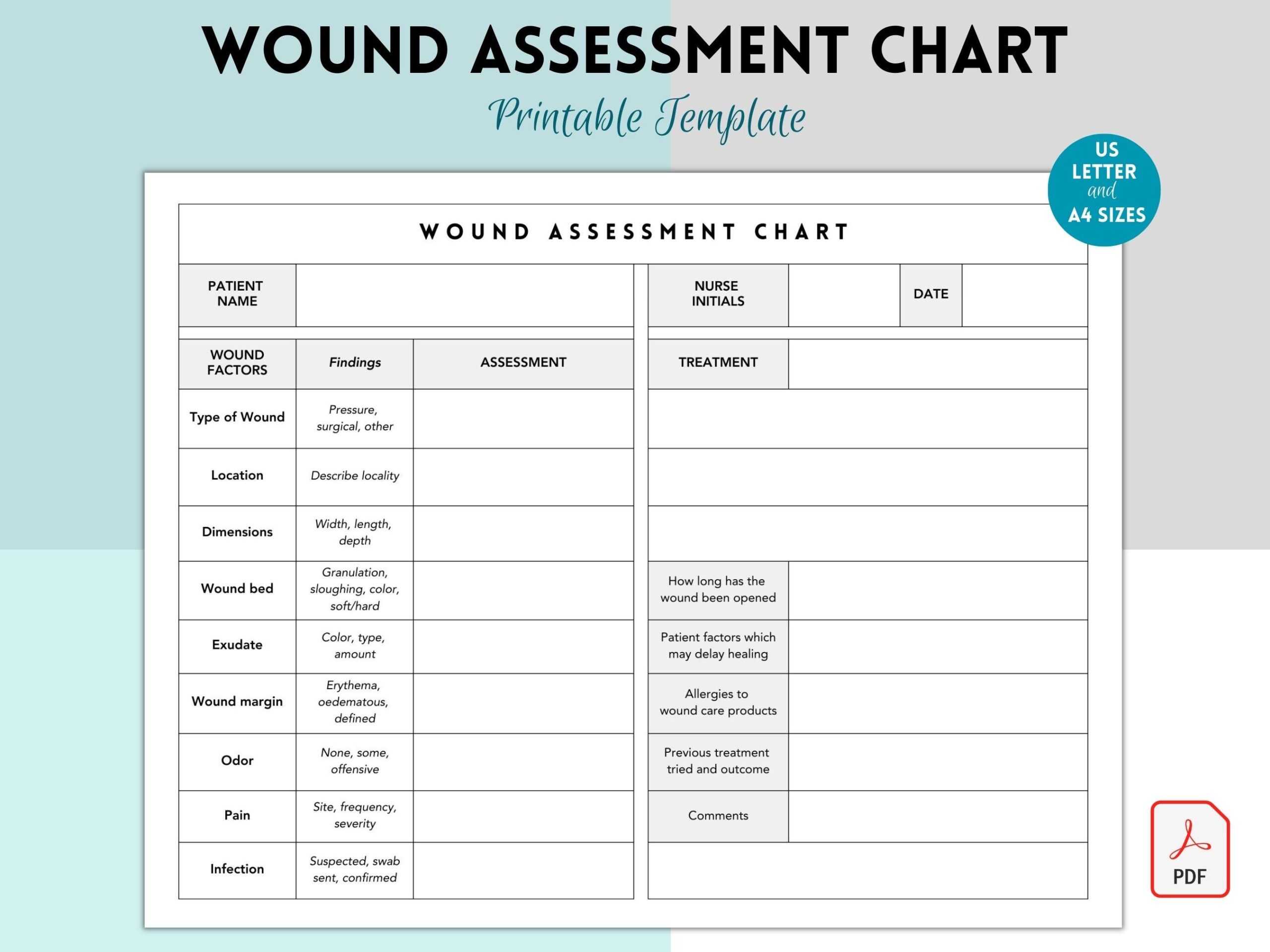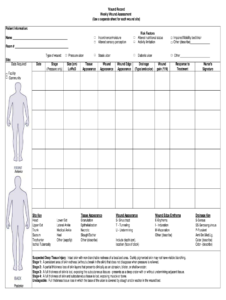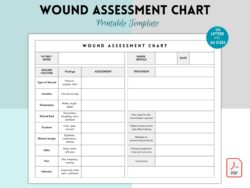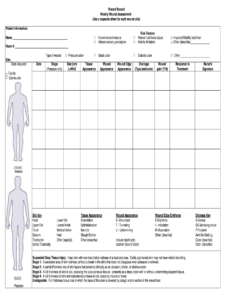Wound care. Just hearing those two words can bring a wave of challenges to mind for any healthcare professional. From accurately assessing the wound to meticulously tracking its progress, it’s a process that demands precision and clarity. But let’s be honest, amidst the bustle of a busy clinical setting, maintaining consistent and thorough documentation can sometimes feel like an uphill battle. That’s where a good system comes in, and often, that good system starts with having the right tools.

Think about it. Every wound has its own unique story, a narrative of healing (or unfortunately, sometimes not healing) that needs to be carefully recorded. This record isn’t just for compliance; it’s a vital communication tool between healthcare providers, ensuring continuity of care and providing a clear picture of the patient’s progress. Consistent documentation minimizes errors, supports informed decision-making, and safeguards against potential legal issues. It’s the foundation upon which effective wound management is built.
So, how do you ensure this documentation is not only thorough but also efficient and easy to use? The answer, for many, lies in a well-designed wound care documentation template. But what makes a *good* template? What key elements should it include? And how can it streamline your workflow while improving patient outcomes? Let’s delve into the world of wound care documentation and explore how a template can become your most valuable ally in providing exceptional care.
The Anatomy of an Effective Wound Care Documentation Template
A truly effective wound care documentation template isn’t just a form; it’s a structured framework designed to capture all the essential information needed to manage a wound effectively. It serves as a comprehensive record of the wound’s characteristics, the care provided, and the patient’s response to treatment. The goal is to provide a clear and concise snapshot of the wound’s status at each visit, facilitating informed decision-making and continuity of care. Think of it as a roadmap guiding you and other healthcare professionals through the healing journey.
At its core, a good wound care documentation template will include patient demographics, wound location, wound type (e.g., pressure ulcer, surgical wound, diabetic ulcer), and the date of assessment. Beyond these basics, the template needs to capture detailed wound characteristics. This includes dimensions (length, width, and depth), the presence and type of any exudate (drainage), the condition of the surrounding skin (e.g., macerated, erythema), and the appearance of the wound bed (e.g., granulation tissue, slough, eschar). Accurate measurement and description are critical for tracking progress and identifying any signs of deterioration.
Furthermore, the template should incorporate sections for documenting the interventions performed. This includes the type of dressing used, any debridement performed, the application of topical medications, and any other specific treatments administered. The template should also include space to note the patient’s pain level, any signs of infection, and any patient education provided. Detailing these interventions, along with the rationale behind them, provides a clear audit trail of the care provided.
The beauty of a well-designed template lies in its ability to prompt you to consider all the relevant aspects of the wound. It acts as a checklist, ensuring that you don’t overlook any important details. This is particularly helpful in complex cases where multiple factors may be contributing to the wound’s condition. By providing a structured format for recording information, the template promotes consistency and reduces the risk of errors or omissions.
Ultimately, a wound care documentation template should be user-friendly and adaptable to different wound types and clinical settings. It should be easy to navigate, with clear headings and logical organization. It should also be flexible enough to accommodate additional notes or observations that may not fit neatly into predefined categories. The goal is to create a tool that enhances your efficiency and improves the quality of care you provide. Consider also, the integration of digital solutions. A digital wound care documentation template can further streamline the process, allowing for easy data entry, image capture, and electronic sharing with other healthcare providers.
Key Elements of a Comprehensive Template
A comprehensive template should include, but not be limited to, the following: Patient identifiers (name, date of birth, medical record number), date and time of assessment, wound location and type, wound measurements (length, width, depth), wound bed characteristics (tissue type, percentage of each tissue type), drainage (amount, color, odor), periwound skin condition, pain assessment, interventions performed (dressing changes, debridement), patient education provided, and any complications or concerns.
Optimizing Workflow with a Wound Care Documentation Template
Beyond just capturing information, a well-designed wound care documentation template can significantly optimize your workflow. By providing a standardized format for documentation, it eliminates the guesswork and ensures that all team members are using the same process. This can lead to improved communication, reduced errors, and increased efficiency. Think of it as creating a shared language around wound care, where everyone is speaking the same dialect.
One of the key benefits of using a template is that it saves time. Instead of starting from scratch with each patient, you have a pre-structured form that guides you through the assessment process. This allows you to focus on the patient and the wound itself, rather than spending time trying to figure out what information to record. The time saved can then be used to provide more direct patient care or to address other important tasks.
Moreover, a template can facilitate data analysis and quality improvement initiatives. By collecting standardized data across all patients, you can identify trends, track outcomes, and evaluate the effectiveness of different treatments. This information can then be used to refine your practices and improve the quality of care you provide. For example, you might discover that a particular dressing is consistently associated with faster healing times, or that a certain patient population is at higher risk for developing complications.
Furthermore, a well-implemented wound care documentation template can help to ensure compliance with regulatory requirements. Many healthcare organizations are required to maintain detailed records of wound care assessments and treatments. A template can help to ensure that you are capturing all the necessary information to meet these requirements. This can reduce the risk of audits or penalties and protect your organization from potential legal liability. To further streamline the process, consider a digital wound care documentation template.
In conclusion, using a wound care documentation template is not just about paperwork; it’s about improving patient care, optimizing workflow, and ensuring compliance. By investing the time to develop or adopt a well-designed template, you can create a more efficient, effective, and standardized approach to wound management. It’s a simple yet powerful tool that can make a real difference in the lives of your patients.
It’s about creating a system where all the pieces fit together seamlessly, resulting in better care and better outcomes. Consider exploring various examples of a wound care documentation template to discover what will work the best for your specific environment.
Ultimately, a well designed wound care documentation template is more than just a form to be filled out, it serves as the foundation for effective and patient centered wound care management.



